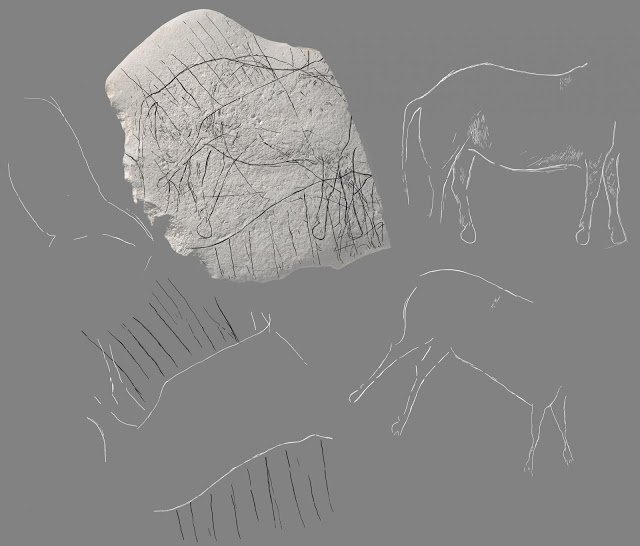Round Up begins with horses – engraved on a stone. At https://archaeologynewsnetwork.blogspot.com/2019/06/prehistoric-stone-en… … archaeologists in SW France have found a slab of sandstone at an ancient Palaeolithic camp site engraved with a couple of horses. They are remarkably life like and a testimony to the artistic skill of stone age people. No date has yet been put on the stone.

At https://archaeologynewsnetwork.blogspot.com/2019/06/ancient-dna-sheds-li… … ancient DNA sheds light on Arctic hunter gatherer migration into North America – 5000 years ago. This is a reference to the migration into Alaska of paleo-Eskimos. However, only 1200 years ago these people were superseded by the present Inuit and Yup'ik peoples and seem to disappear from the archaeologal record altogether by 700 years ago. The DNA study has shed some light on events (using a large sample of ancient and modern Siberians, Aleuts, and people in Alaska and Canada. The researchers were able to show that a substantial proportion of the genetic heritage of all ancient and modern come from the paleo-Eskimo migration so the later people absorbed the older people. They include people speaking Na Dene languages such as Athabaskans and Tlingit and various tribes in the SW states of the US. Aleuts and Athabaskans are the result of the admixture.
At https://archaeologynewsnetwork.blogspot.com/2019/06/dna-from-31000-year-… … two milk teeth pulled out of soil at a site in NE Siberia have revealed a previously unknown group of people living there during the last Ice Age (although this was forecast by David Reich several years ago). The site, known as the Yana (river) Rhinoceros Horn Site features 2500 artifacts dug out of the soil, including bones, ivory, and stone tools, and evidence of human occupation (another camp site). They appear to have been into hunting mammoth, rhinoceros and bison – and various other animals. This appears to be further evidence the region was not as cold and frozen as it is supposed to have been. Remarkably, according to a Swiss professor, these people of ancient northern Siberia are closely related to Europeans (or Eurasians more properly). They are of course also linked to the peoples of the Americas and we may wonder when exactly they migrated across Beringia (or the Arctic Ocean).
